Termite prevention tips
Termites are microscopic insects that feed on cellulose available in soil, wood, and leaf litter to survive. Termites prefer rotting, decaying wood, but they will eat anything that has the nutrients they require to expand their population. Termite infestations are a threat to homeowners, and once you have them it is almost impossible to get rid of them without professional help. Carrying out frequent inspections around your house and garden to check for termites and other pests can really prevent you from a lot of trouble down the line. Now that spring is coming into swing in Australia, this is the prime time for termites, as swarmers emerge to mate and build new colonies. Most of the time signs of a termite infestation go unnoticed until it’s too late. Therefore, you will need termite treatment.
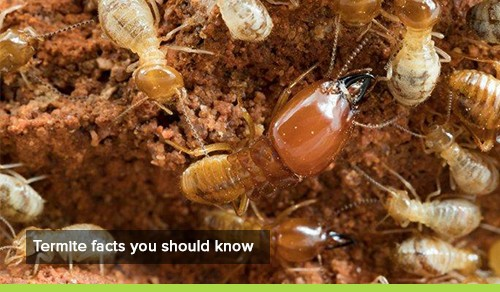
Termite facts you should know:
- There are about 2,000 known termite species in the world
- The Termite Queen life spans 5 to 10 years and lays up to 160,000 eggs in a year
- A colony comprises 95% worker termites; 5% soldier termites.
- Termites feed on wood non-stop in a day 24 hours.
- Mud tubes made out of soil and fecal matter are built by termites for them to travel around in.
- Termites have wings that they shed once they have found a good place to build a nest.
- Termites are known as “silent destroyers” because of their ability to chew through wood, flooring, and even wallpaper undetected.
- Each year, termites cause more than $5 billion in property damage
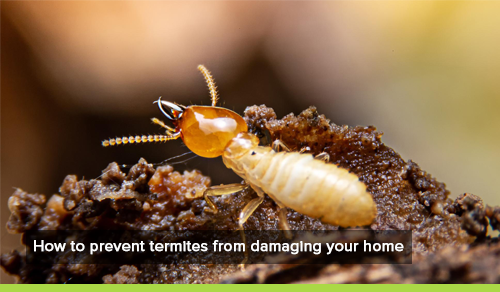
Termite Symptoms
If termites infiltrate your home, it’s vital to be alert of any likely warning signals in order to limit the damage they cause. Keep an eye out for sagging or discolored drywall, as well as flaking paint that could indicate water damage. It’s also not a good sign if hollow sounds come from wood. If you observe any bowing or squeaky flooring, this could be a symptom of an infestation. Finally, discarded termite wings near doors or windows could suggest a recent termite swarm. Check the wings or keep them and have them examined by an entomologist or a pest control business in your area.
Termites eat organic matter that has died. By recycling waste items such as dead wood, dead animals, plants, excrement, and cellulose, serves to support the environment. By feeding, digesting, and defecating into the soil, they also break down complicated compounds that plants are unable to use. This aids in soil recycling and improves its nutritional value. They can, however, do substantial damage to houses and businesses, despite the fact that they are incredibly useful to the ecosystem.
There are some steps you could do to make your home unwelcome to termites. Follow these termite prevention tips to safeguard your property against an infestation. The best way to defeat termites is to know what makes them thrive. Creating conditions that prevent their livelihood is the best way to deter their presence. Guarding your property and home against their destruction can eliminate a costly infestation, which covers all Australian termites, along with breeding cycles, the food they eat, their habitat, and their destructive nature.
Follow these termite prevention tips from damaging your home
Eliminate or reduce any excess moisture in and around your home
Make sure to repair and seal any leaky faucets, water pipes, and AC units. Water damage will usually always attract active termites in that area of the home. Install a drain and redirect the water away from your home. Clean or replace overflowing gutters especially during periods of heavy rainfall, any signs of dampness in and around the house should be inspected immediately from termite infestations.
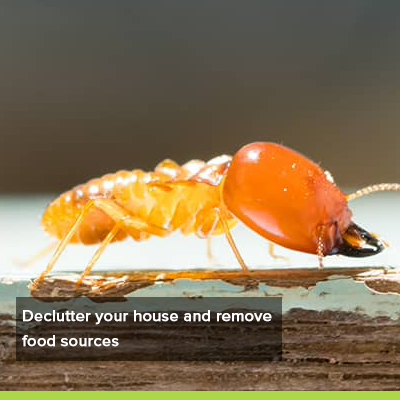
Declutter your house and remove food sources
Make sure to reduce any scrap paper, cardboard boxes, newspapers, and magazines that are lying around your home. Termites thrive on anything that contains cellulose which is obtained from wood, grass, leaves, and materials of vegetable origin. Also, check your roof for any repairs that might need to be done.
Monitor all exterior areas of wood, including windows, doorframes, and skirting boards for any noticeable changes. You should also stack any firewood at least 20 feet away from your home, and raise the stored wood at least 8 inches off the ground. Create a 4-inch barrier between mulch and your home. If possible, only the concrete foundation should touch the soil.

Reduce soil to wood contact
Ensure you maintain some distance between the soil and wood, as this will help prevent any termites from attacking the foundation of your home. Many homes have wooden fences or decks that attach to the house and make direct contact with the ground, so you can use stones or cement to separate soil from the wooden area, this will create a physical barrier for termites. If you have a wooden fence near your home, check for rotted or infested wood.
You can also use termite-resistant paint or stain to hinder them from turning your fence into a new nest. Borate is one of the most popular termite repellents. You can spray borate on wood prior to priming and painting. It soaks into the wood and essentially prevents termites from attacking and nibbling on it. Once this termite spray has dried, you can prime and paint it normally and use it to make window frames, doors, furniture, etc. This borate spray is strong enough to repel termites for decades.
Place infected items in the sun
If you find termites have started damaging a piece of furniture, place it in direct sunlight for at least three consecutive days. This termite protection strategy can work well in summer since termites cannot stand the heat. By keeping the infected furniture in the sun, the heat will kill the termites and remove moisture from the furniture preventing chances of re-infestation.
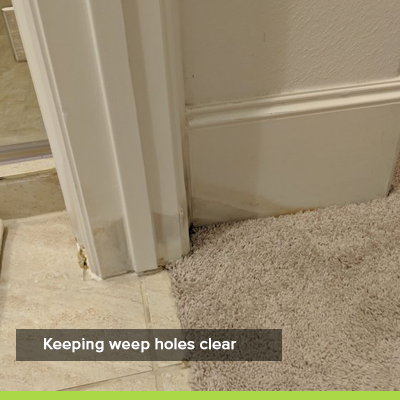
Keeping weep holes clear
Another common cause of termites is wept holes covered by vegetation, mulch, or soil along the external perimeter of a property. Australian terms require a clearance between the soil and ground level or path to your weep hole to be 75 mil or greater. Therefore, there needs to be enough distance between the ground and the very bottom of each weep hole, so it’s possible to visually see any signs of termites, which are usually mud trails.
Many homeowners tend to put grass clippings, dirt, mulch, and even garden beds along the edge of the walls, therefore covering the weep holes over. This makes access for termites incredibly easy as they simply travel through that soil or vegetation, pass through the weep hole and begin feeding on the property’s structure.
Prevention tips
- Don’t cover weep holes with soil, mulch, or garden beds. Keep them clear. At least 75 mm clearance between ground level and the bottom edge of each weep hole
- Don’t use a sealant to block weep holes off. These act as breather holes for your home, should dampness get into the property’s foundation
- Don’t lay pavers or concrete in a way that obstructs or covers weep holes

Reduce plants or garden beds near your property
While we all love having plants near our homes. Some plants can provide a pathway for termites. Plants can also make it harder to notice if termites are attacking your wood siding or exploiting cracks in your home’s foundation.
To protect your home, make sure to keep all shrubbery near your home trimmed, allowing at least 12 inches between the shrubbery and the exterior wall of your home. Trimming shrubbery can also improve airflow, allowing damp areas to dry out quickly while making it easier to discover termite tubes and termite damage.
Keeping grass near your home cut short and raked regularly.
Using pine needles as mulch. Pine needles are less appetizing to subterranean termites than wood mulch and would help with termite control. If pine needles aren’t available in your area, consider pea gravel or other non-organic material as a barrier between your house and the ground.
- Keep garden beds away from your property’s walls
- Plant garden beds, or vegetation away from the home, at least a few meters clear of the property
- Be conscious of where you water (hose, sprinkler systems etc)
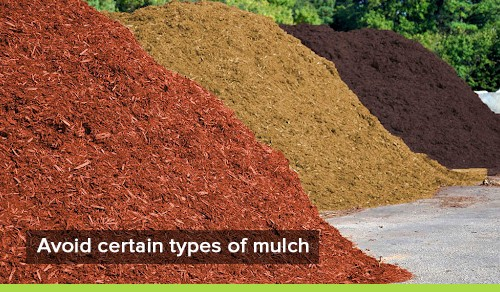
Avoid certain types of mulch
Only ever use certain types of mulch that are termite resistant and always ask what type of mulch you’re getting when dealing with landscape supplies. Never shovel mulch from unknown sources off the side of the road.
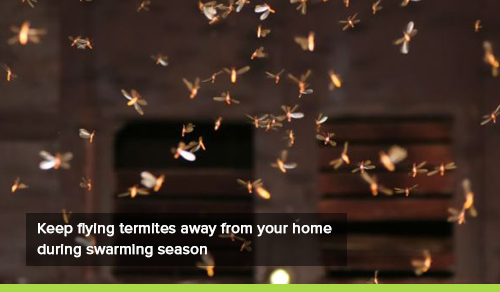
Keep flying termites from coming to your home during swarming season
During the early spring, flying termites may swarm to establish new colonies. These tips can help prevent termites from swarming into your home:
- Turn off outdoor lights at night, which can attract flying termites. If possible, relocate lights to secluded areas away from doors and windows and soffit vents.
- Have a professional check your roof and eaves for any gaps that termites can use to enter your home, and fix gaps as quickly as possible.
- Check window screens and patch any holes.
- Have a professional check your roof for any signs of water damage, mold, or rot. Structures with flat roofs or chronic leaks can be at risk because the structure can retain enough moisture for a termite colony to establish itself.

Professional Pest Control
The best way to keep termites from infesting your home is to have the property monitored by your local pest control professional. Competitive Pest Control is happy to provide you the service you need for a termite inspection. Call us at 1300 766 614 and we will let you know how we can help you going forward. There is nothing like having the peace of mind that comes with a termite monitoring service.
Termites have the potential to cause an extensive amount of damage leading to a significant amount of costly repairs. Do yourself a favor and take these steps to defend your property against a pest invasion. These small, preventative actions can greatly reduce your risk of a disastrous infestation.
Even the most diligent of homeowners can be vulnerable to these determined insects. Continuously monitor your property for any presence of termites. Keep in mind, however, that termites are very difficult to spot. It is always a good idea to have a professional routinely monitor the property as well. These combined efforts will give you the best chance of keeping your home safe from these pesky invaders.
If you’re concerned you might have a termite infestation call a professional pest control company. They can carry out a thorough termite inspection of your home and also provide you with the best possible solution and treatment to protect your home from any further damage.

WE'RE NOT HAPPY UNLESS YOU'RE HAPPY
SEE HOW IT WORKSWith Competitive Pest Control Services you’ll never have to worry about paying for a job that hasn’t been done.
If you’re not satisfied with our services, we’ll not only give you your money back, we’ll return it to you twofold. That’s right: you’ll not only receive a full refund, we’ll also pay to have your pest problem sorted by our competition.*
We’re always trying to raise the standard of service, it’s one of the reasons we were name Australian Pest Manager of the Year four times in the past six years. When you employ our services, you know your pest problem will soon be a distant memory. What could be more satisfying than that?
*Please contact us to hear more about our 200% Money Back Guarantee - as due to issues sometimes outside our control, not all services may be covered by this offer.





 Instagram
Instagram  LinkedIn
LinkedIn